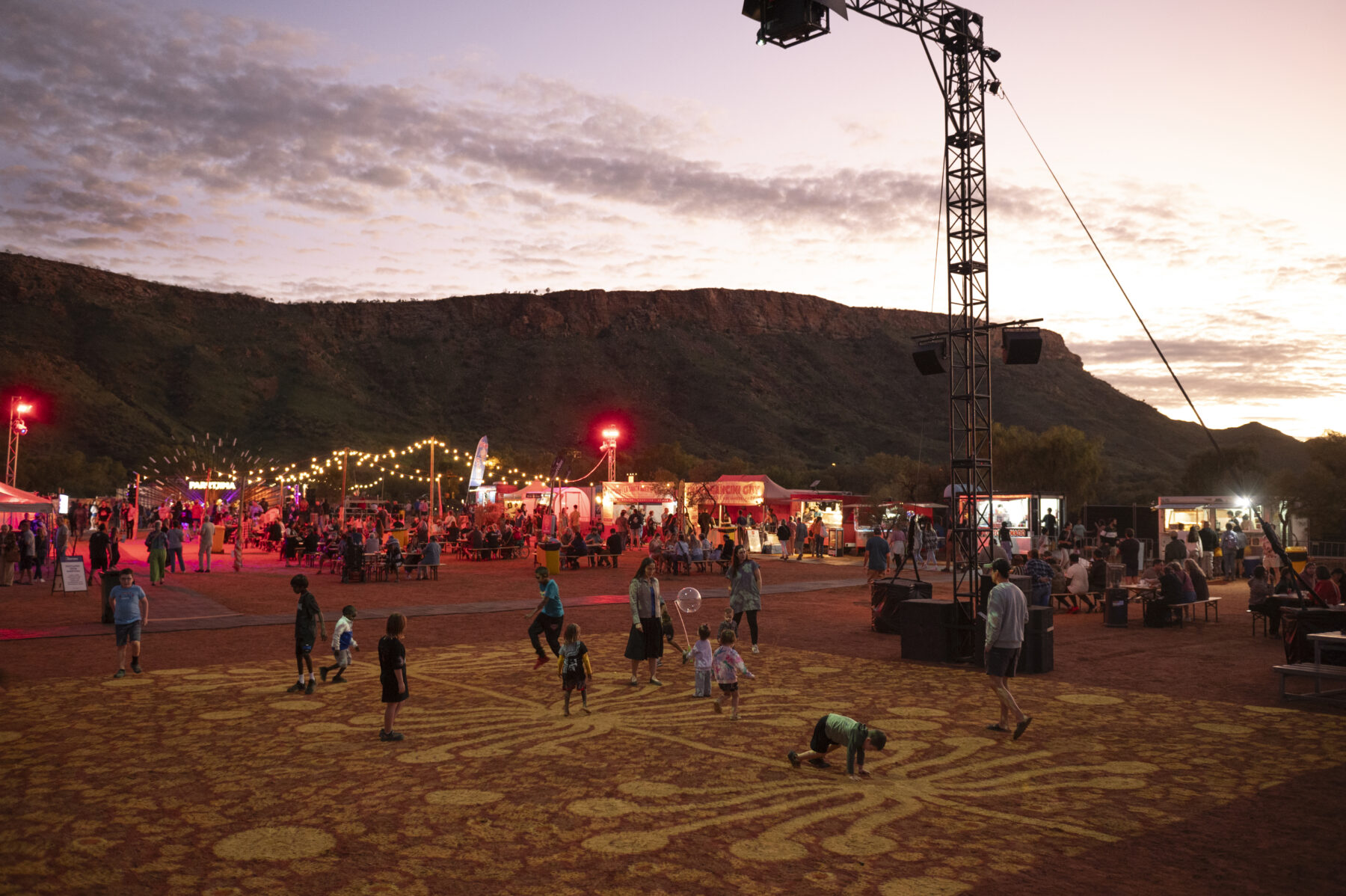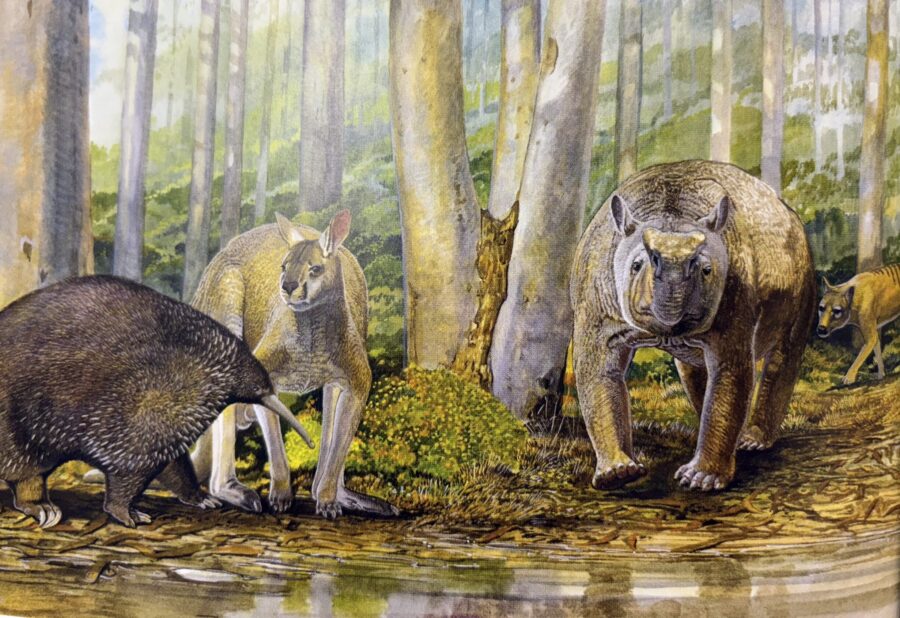Strings of festoon lights guide the way through Alice Springs Desert Park at the foot of the Tjoritja/MacDonnell Ranges. The energy in the air is palpable. It’s opening night of Parrtjima 2025 – a free, 10-night, all-ages festival that cleverly uses modern technologies to celebrate the oldest continuous living culture on earth.
It’s also the event’s milestone 10th iteration – a true testament to the trailblazers working behind the scenes who have delivered a logistically challenging event. Crowds are greeted with a grouping of tall wooden poles rising from a clear expanse. These are adorned with artwork drawn in ultraviolet paint, illuminated by beams of blacklight.
Together, the poles form the Arrernte word ‘werte’, meaning ‘hello’ or ‘welcome’ – a message from Mparntwe/Alice Springs’ three estate groups: Antulye, Irlpme and Mparntwe. Artists from each group have painted the poles in their own styles using traditional markings and symbols unique to their respective skin groups and home nations. Entitled The Gateway, this installation is the tangible result of the festival’s community engagement program, which brings together artists from Mparntwe/Alice Springs’ Aboriginal Art Centres, Alice Springs Town Camps, and neighbouring nations.
“We also bring the artists into town [from Country] because it’s lovely for them to be all together,” explains Parrtjima curator and Bundjalung woman Rhoda Roberts. “It’s an amazing few days – they sit there and paint and gather around and chat, yarning, and having a good time. It’s really lovely. And, of course, they work. They pump it out!”
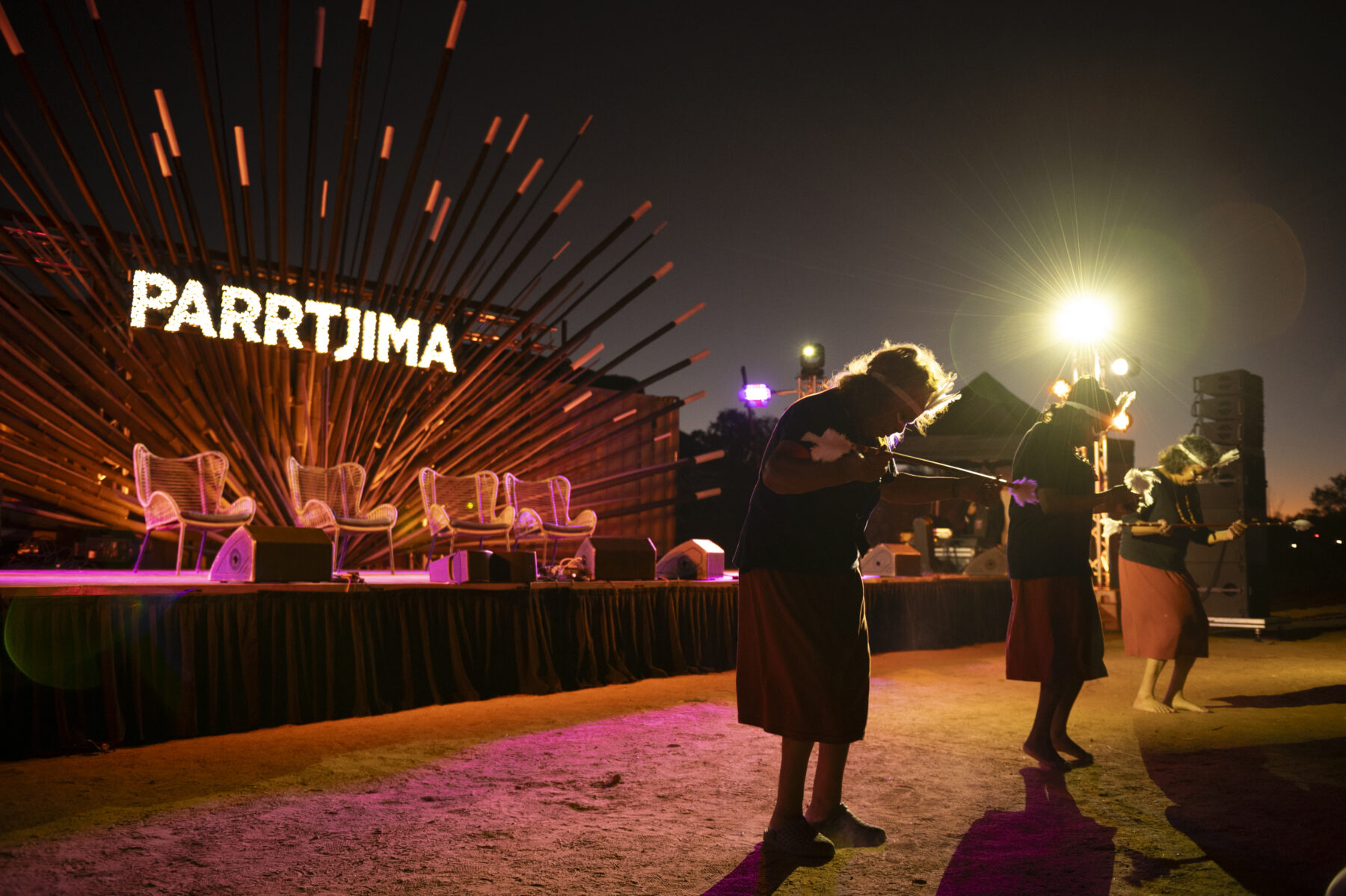
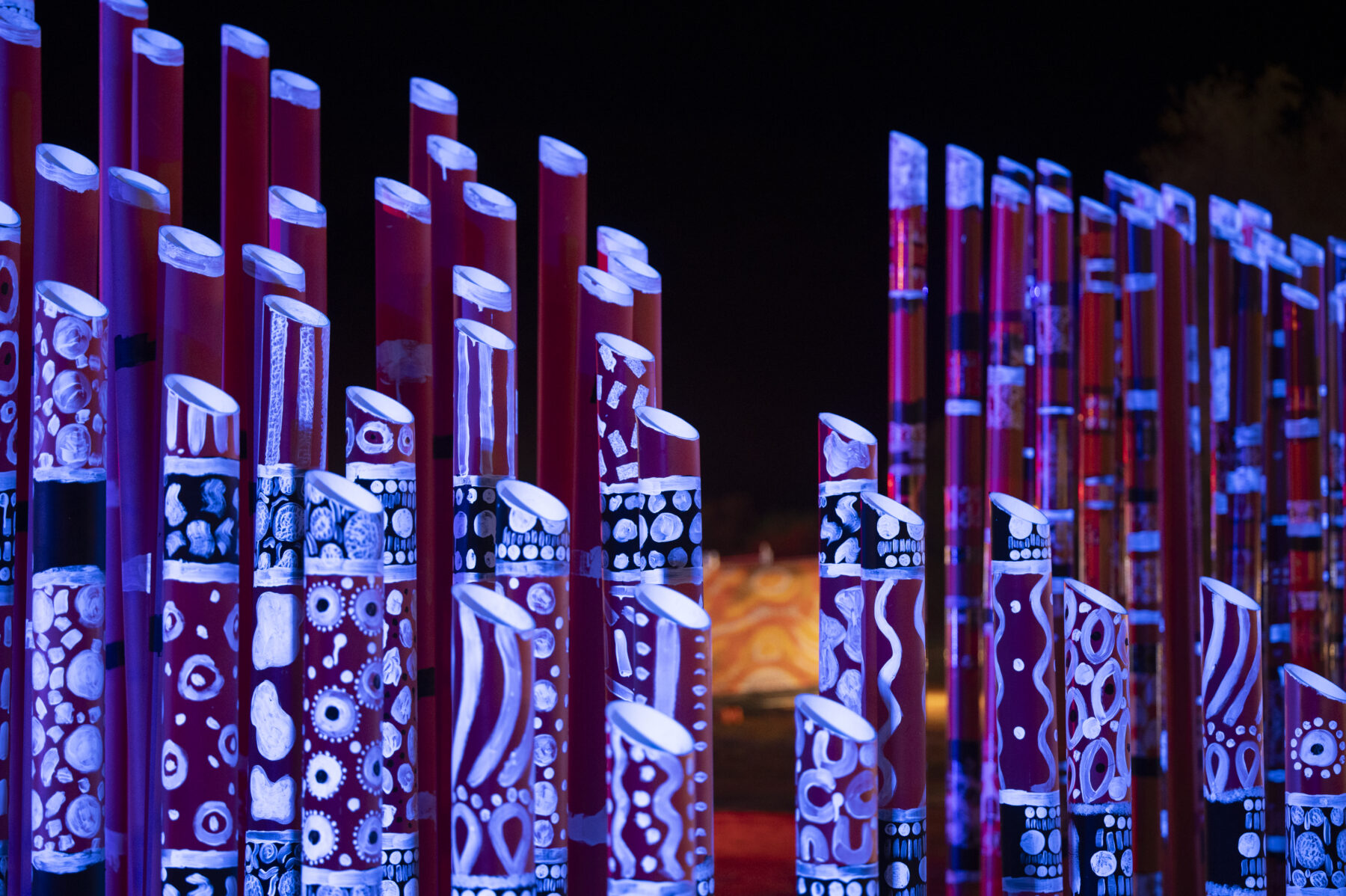

One of this year’s big drawcards is Hypnotic Reverberations, a reimagining of an artwork on canvas by Bobby West Tjupurrula. The original painting’s chevron patterns have been carved into a steel cylinder, and light projected from within casts shifting shapes onto the surrounding curved walls. Mist fills the space in between, while ambient music swirls through the air.
Bobby is a Pintupi man hailing from what Rhoda describes as “an artistic dynasty”. Bobby’s father was Freddy West Tjakamarra, one of the early founders of Papunya Tula Artists – a group that encouraged Indigenous peoples of Papunya Country to preserve their stories and knowledge using acrylic paint on canvas. This went on to inspire the Western Desert painting movement of the 1970s, which catapulted Indigenous works into the wider art world and onto the national – and international – stage. Bobby’s art continues the themes painted by the Papunya artists before him, portraying landscapes of the Western Desert created by Tingari – ancestral Dreamtime figures that shaped the land.
This painting depicts Palipalintja, a rockhole and swamp on Pintupi Country in remote central Western Australia. The curatorial note reads: ‘In ancestral times, a large group of Tingari men travelling from the west camped here before continuing to travel east through Wala Wala, Kiwirrkura, Tarkul, and Lake Mackay. The lines represent sandhills along their journey.’
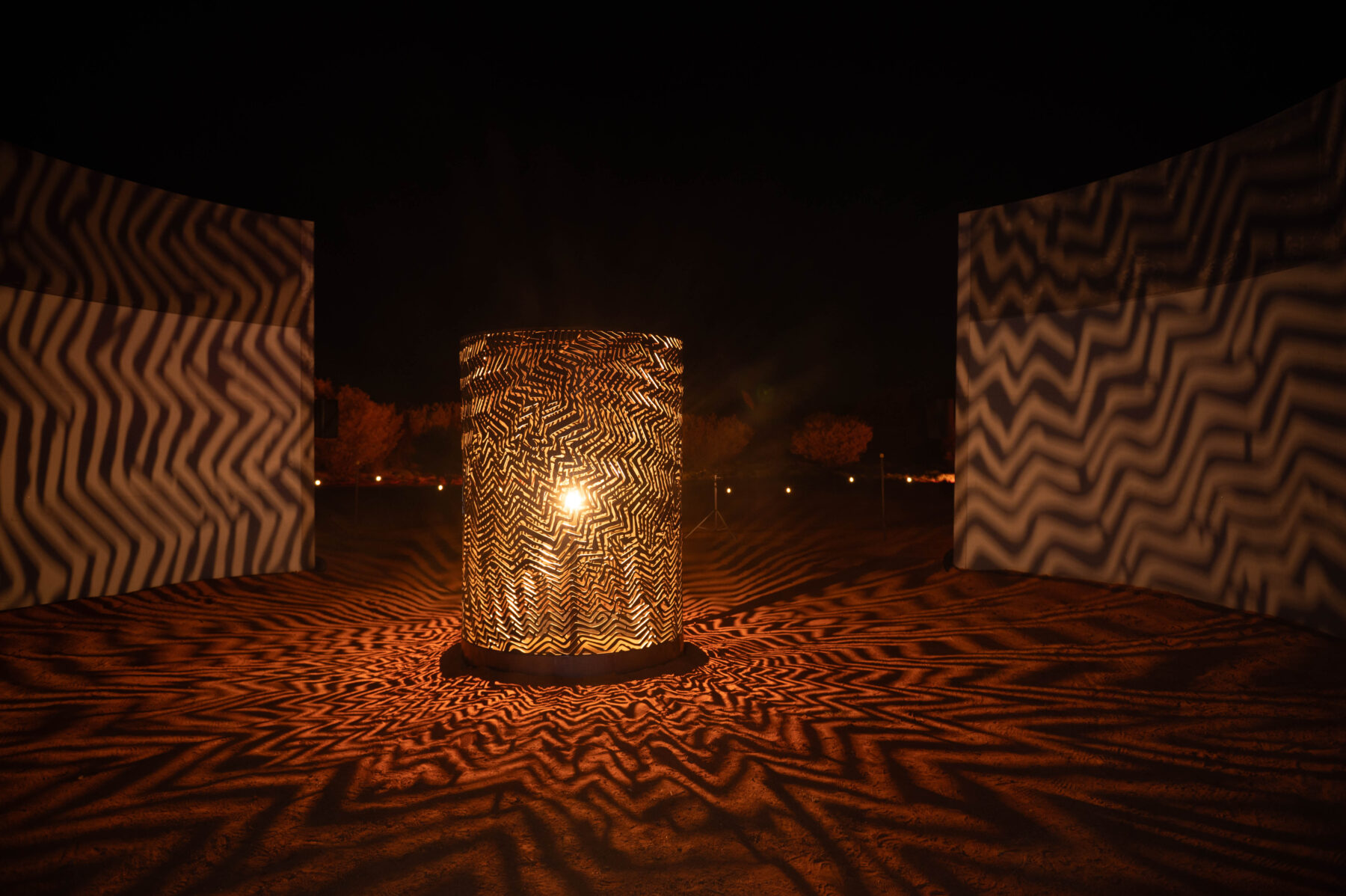
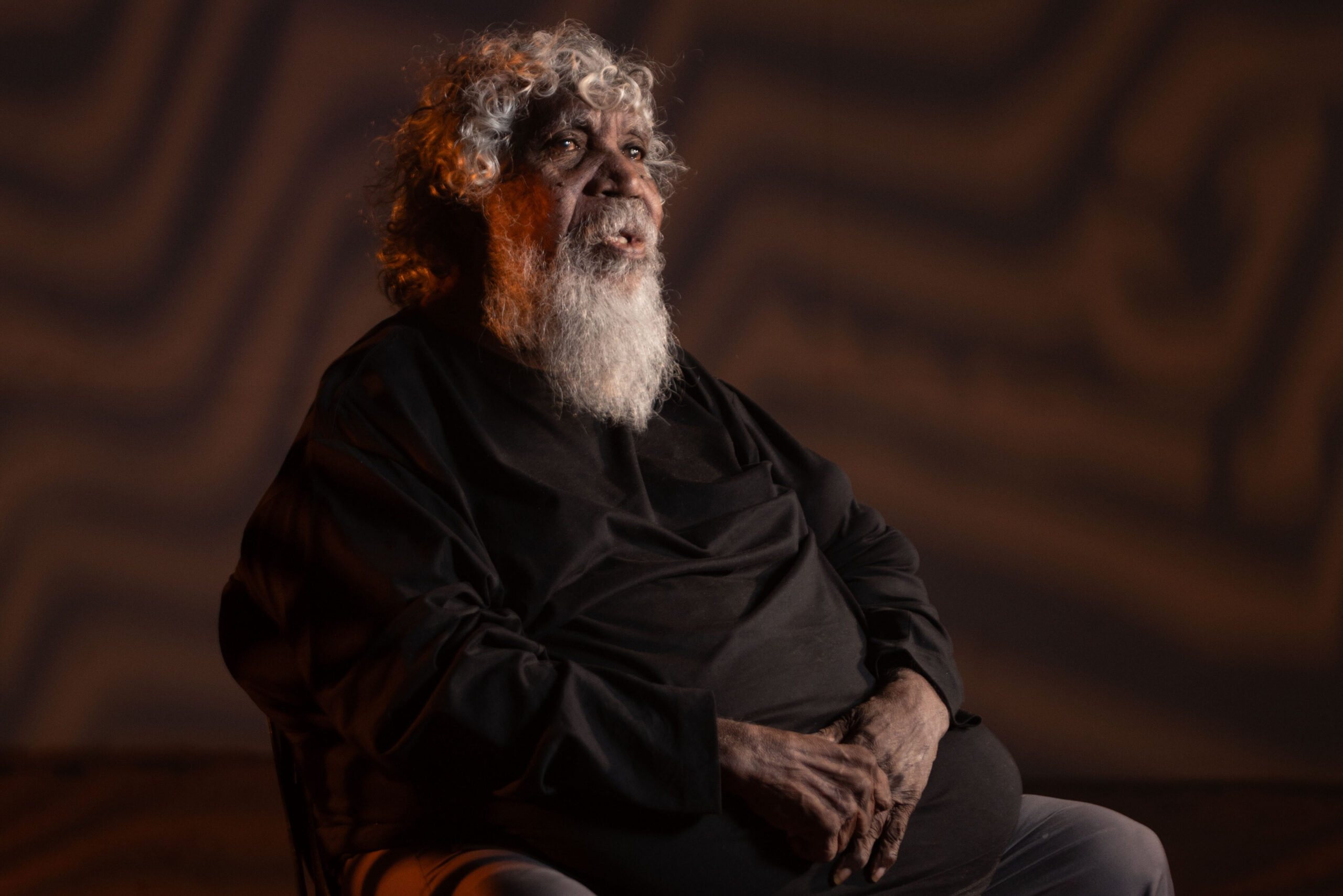
“Parrtjima and Arrernte came and asked me if they could buy my canvas and have a show in Parrtjima, and invited me here tonight,” Bobby says. “It’s really good, the way they put the light in. It’s like my painting. It’s the same thing – shaped like my painting, but in light. I’m so happy.”
Bobby fully embraces the use of modern technologies and new artistic mediums to tell ancient stories. “It’s different,” he says. “We had, you know, the good old days, but we’re going forward now. We have to use it.” Bobby has travelled to Alice Springs with his family for opening night. “It’s the first time for us, for my family and for me, for everyone to come here. And I’m so excited and really proud,” he says.
Timelessness
Another ‘artistic dynasty’ is also represented in the 2025 program with the inclusion of a work by Lyall Giles, whose mother, Nyarapayi Giles, was a key figure in the Western Desert movement. Lyall is now the most senior wati (man) in Tjukurla (a remote Aboriginal community in Western Australia on Ngaanyatjarra Country).
Lyall’s installation, Transforming Light & Country, is a tunnel of interconnected archways surrounded by drums which, when tapped, trigger different lights and sounds. This work represents the sand-dune patterns and waterholes in the terrain surrounding Tjukurla, while the interactive element of the drums re-creates the landscape’s energy.


Rhoda says that Bobby and Lyall’s works inspired Parrtjima’s 2025 theme: Timelessness. “I looked at those two men and thought ‘they’re still continuing these incredible song cycles that inform their work’. They went from their old people doing sand ceremonies right through to putting it on canvas, and now they’re in light.
“And that’s what amazes me. They might be told in different expressions, but actually, it’s the same story that has been told for thousands and thousands of years. They’re making sure those stories are archived in some way that’s relevant, in whatever century they live in and the mediums that are available. Also, of course, their family dynasties are timeless.”
Rhoda Roberts – Parrtjima curator
They’re making sure those stories are archived in some way that’s relevant, in whatever century they live in.
This year’s major installations are a mix of brand-new, staple festival favourites and the previous years’ most popular, which have been brought back to mark the 10th iteration. There is, of course, what Parrtjima is famous for: the spectacular MacDonnell Ranges Light Show. But there’s more than just light installations; there are performances, films, talks, live music, workshops, stand-up comedy, food trucks and markets.
Each year, every work showcased at the festival takes a different approach to achieving the same goals. Firstly, to share Indigenous culture and knowledge with a wider audience. In fact, Parrtjima (pronounced par-CHEE-mah) is an Arrernte word meaning ‘to shed light’ or ‘to light up’ – both in the literal sense and in a metaphorical sense, shedding understanding on a subject. Secondly, to preserve ancient songlines using new mediums for future generations. And thirdly, to encourage a sense of pride in Indigenous Australians about who they are, and what they have to contribute.
Connecting communities
Paul Ah Chee is Parrtjima’s director of cultural engagement and chair of the Northern Territory Aboriginal Tourism Committee. A Yankunytatjara, Wangkangurru, and Arrernte man, he, alongside Rhoda, has been a driving force of the festival in different capacities since its beginning. He’s also a musician, performing at this year’s festival.
Paul says the festival is now “really well embraced” by both the Aboriginal community and the broader community of Alice Springs, as well as the region. “Just being out on the ground where Parrtjima is actually happening, seeing the different demographics is a testament to this – in terms of nationalities that are there, the age groups, families to teenagers to older people, it’s got a really fantastic blend. It’s really a vessel of connectivity.”



But the festival wasn’t always welcomed with open arms, particularly in the early years. Paul explains some Traditional Owner groups were worried about different cultural sensitivities, while conservation groups were concerned about adverse effects of the lights on wildlife.
“In year one it was a very soft approach, because there was still a lot of resistance,” he says. “But as it progressed, and people saw that it’s truly a community event – that what it’s projecting is only positive, that there’s no impact on the wildlife – the majority got on board. Then it’s the power of the people. It speaks for itself.”
The Parrtjima Festival Reference Group (a network of Traditional Owners and Elders with connections to Mparntwe/Alice Springs’ three estate groups) was also established early on, and continues today, to ensure cultural integrity is always protected. “In all good intentions, sometimes there’s not always a good result if you don’t do the proper due diligence around it all,” Paul says. “So, everything gets run past the reference group so that there’s nothing that will be controversial or inappropriate in terms of a cultural element.
“But Parrtjima really provides pride, too. It provides a sense of ‘wow, this is who we are, this is how wonderful our art is, this is how wonderful our culture is’. It instils that sense of pride.”
Paying homage
Projected on a big screen at the centre of the festival is Three Generations of Station Women – an animated comic strip created by young Balanggarra woman and Yolngu artist Molly Hunt. The accompanying soundtrack is composed by Australian actor and Nyikina man, Mark Coles Smith.
“It’s a story about Indigenous women in the pastoral life, in my comic, pop, contemporary way – how I tell all my stories,” Molly says.
Rhoda adds, “It’s not a traditional story, but it has become a bit of a tradition when we speak of the matriarchs. A lot of Australians don’t realise how many Aboriginal women were in the stock industry, and it’s amazing how many Aboriginal women now are actually running stations. So, it pays that homage.”
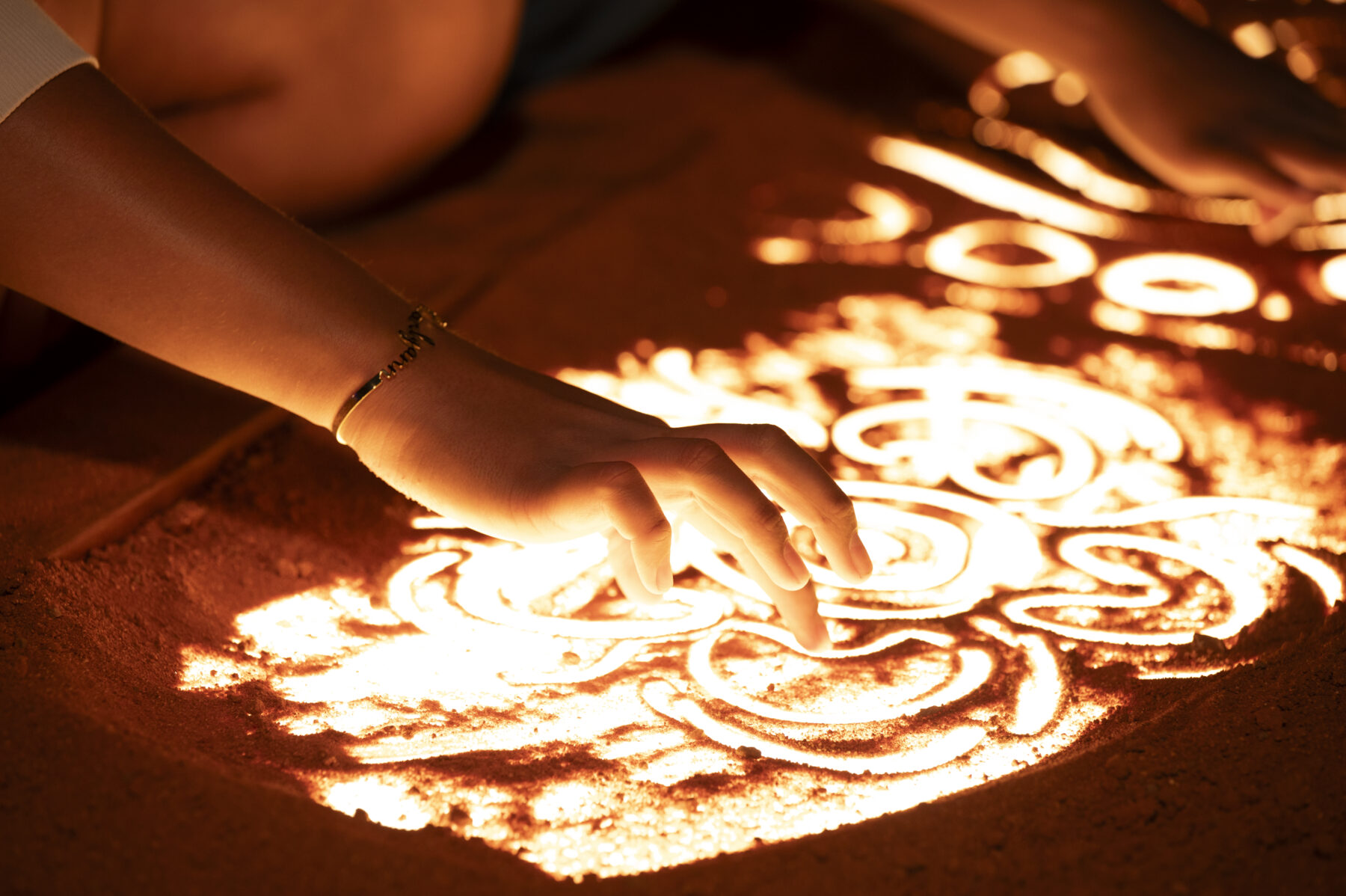
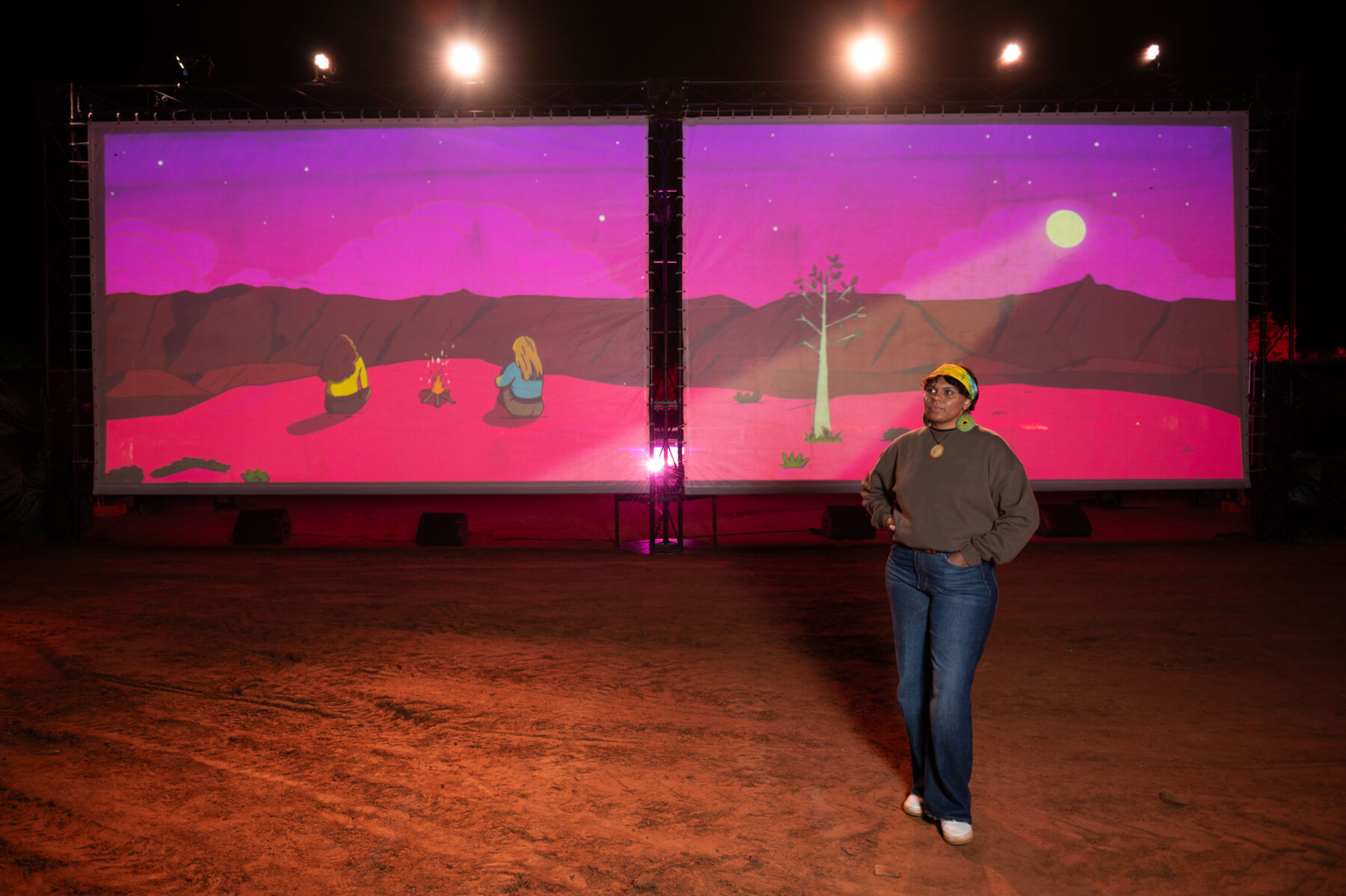
Molly herself was raised by six different women – her mother and aunties. She’s also the eldest of 11 siblings, and the eldest of 25 grandchildren.
“I had kind of first pick – all these different women bringing me up and all very close. So, in all my stories, I can’t help but be influenced and inspired by all the matriarchs around me. It’s all my aunties, all my mothers, all my sisters, all my cousins, and also acknowledging that I too one day will be a matriarch,” Molly says.
“All my art is about celebrating and shining a light on black women. And I’ve got strong connection and ties to women that have lived the station life – as Kimberley people, we’re all the children of Aboriginal stockmen and stockwomen. So, their stories are mine, and this is my way of telling them.
“This animation is not as thorough and not as deep as others. It’s a lighthearted story. It’s very much just praising and shining a light – saying, ‘Wow, look at these deadly, black, strong women.’ But I’m hoping it starts the conversation.”
